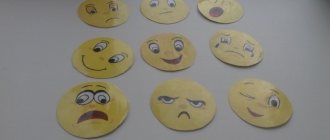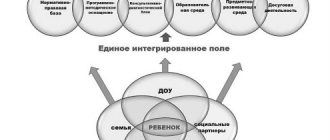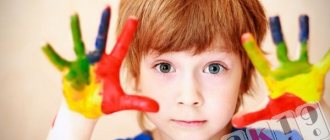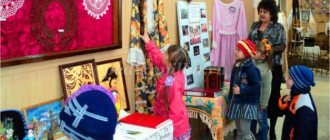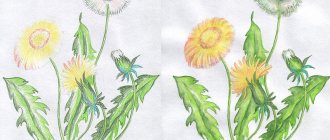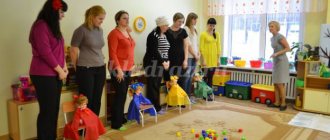Technique “Drawing Fear”
All children experience fear. This is the fear of the dark, big and angry dogs, fairy-tale monsters, illness, etc. and so on. Sometimes fear has such a strong impact on the child’s psyche that the child begins to hear and see only information related to his fear. Thus, the child increases the feeling of fear, and this entails muscle tension, stiffness of the whole body, and weakening of attention. Therefore, it is so important to teach a child to relax by expressing his fear in creativity.
Exercise
For the art therapeutic technique “Drawing Fear” you will need: gouache or watercolor, A4 paper, brushes, a jar of water, a “Fear” pictogram.
Show your child the fear pictogram and ask him to paint fear on his face in front of the mirror. Then ask to draw the face of a person experiencing fear on paper. Make sure that by the end of the work the entire sheet is filled out. “Fear” pictogram
When the drawing is finished, invite your child to remember the most terrible incident in his life and talk about it. And then ask the child if he likes the fear that he drew, and would he like to destroy it? Offer to crumple the drawing or tear it into small pieces, and then set it on fire so that the child can see that his fear has burned away. After the drawing burns out, invite your child to throw the ashes into the toilet and rinse with water or scatter in the air outside. The main thing is that the baby chooses what to do with the ashes. After this procedure, you need the child to wash his hands clean and dry them with a clean towel.
PROGRESS OF THE CLASS
WARM-UP:
1) Creating a positive, working atmosphere in the group. 2) Preparing the child for the upcoming activity.
Greetings. Getting ready to work.
BREATHING EXERCISE
I.P.
- sitting. Children sit with their eyes closed. Exhale - open your eyes. Inhale - close your eyes. Continue, exhaling in the light, inhaling in the dark. Let your eyes relax completely when they are closed. Open your eyes and blink.
MAIN PART:
Diagnosis of the level of formation of emotions. Work on the topic (Thematic games and exercises).
Psychologist:
Today we will talk about emotions.
Look at this person’s face (The “Joy” icon is shown).
What kind of face do you think this person has? (Children's answers). Yes, joyful. How did you guess? (Children's answers). Yes, correct. Well done. When we have a joyful face, we smile widely, our eyes become narrow, they squint. Let's try to portray joy on our face.
(During this lesson, you can use the presentation “Emotions” from the “Presentations” section)
Exercise “PICTURE JOY”.
All participants sit in a circle. One player depicts “joy” and passes this expression on to the neighbor on the right, who must repeat what he saw on the neighbor’s face as accurately as possible.
Psychologist:
Let's play the game "SUNNY BUNNY" so that you are in a good mood.
Exercise “SUNNY BUNNY”.
o The sunbeam looked into your eyes. Close them. o He ran further over the face, gently stroke it with your palms on the forehead, on the nose, on the mouth, on the cheeks, on the chin o Gently stroke the head, neck, arms, legs. o He climbed onto his stomach - pet his belly. o The sunny bunny is not a mischief maker. He loves and caresses you, make friends with him. Great! We made friends with the sunbeam, take a deep breath and smile at each other.
Psychologist:
How did you feel after doing this exercise?
(Children's answers)
Physical education minute.
| Let's put our hands to the sides. We'll get the left one with the right one. | Stand with your feet apart, arms to the side. Turn to the left, clap your left palm with your right palm. |
| And then - on the contrary, there will be a right turn. | Turn to the right, clap your right palm with your left palm |
| One - clap, two - clap, Turn around one more time! | While clapping, turn around yourself. |
| One - two - three - four, Shoulders higher, arms wider! | Clap your hands, raise your shoulders, spread your arms to the sides. |
| We lower our hands down and squat down! | Slowly lower your arms down. To squat. |
Exercise “PICTOGRAM”
Psychologist:
(Shows the “Anger” pictogram)
Look at the face depicted on the card. How does the person in the picture feel? (Children's answers). Look at the expression on his face...What happened to his mouth? Eyebrows? What is the expression of the eyes? Now let’s listen to the story about the boy Petya, which is called “Angry Grandfather.”
Petya came to his grandfather’s village and immediately went for a walk. Grandfather was very angry because Petya left the gate without warning. Where did he go? What if something happens to him? Let's act out this story.
Exercise “I AM SAD WHEN...”
Each child tries to finish the sentence started by the leader... I feel sad when... FOR EXAMPLE:
the child describes sadness as the feeling when “... there are tears in your heart.”
o “I sometimes cry when I’m sad.” o “When you get really angry, it’s better not to hit anyone, because they might hit you back,” etc.
The psychologist demonstrates the “Fear” pictogram. Look at the picture. Who is depicted on it? What's his mood? (Discussion taking place).
Psychologist:
Let's play the game "Wolf and the Hares."
Game "WOLF AND HARES"
A leader is chosen from among the players - a wolf, the rest are hares. When the wolf falls asleep, the hares slowly go out for a walk, but when they hear footsteps, the wolf pounces on the hares and catches them. After the end of the game, a discussion takes place: what emotions do the players experience when they have played the role of hares. Were they scared?
Work in notebooks, fine art activities.
o Students should take turns choosing 3 colors of paint that they like best and draw 3 circles.
Oculomotor exercise
TARGET:
Relieve fatigue and eye strain, prevent eye diseases.
I.P.
- sitting. The head is fixed. The eyes look straight ahead. Begins practicing eye movements in 4 auxiliary directions (diagonally), bringing the eyes to the center. Movements are performed at a slow pace (from 3 to 7 seconds). Eye movements must be combined with breathing.
o Students are given sheets of paper. There are outlines of masks on them; you need to depict a happy, sad, scary mask.
Exercise “GUESS THE EMOTIONS”.
Students are offered pictograms depicting emotions. They must guess what emotion is depicted in a particular picture.
Exercise “FRIENDSHIP STARTS WITH A SMILE.”
Those standing in a circle join hands, look into the neighbor’s eyes and silently give him the kindest smile. (One at a time).
CONCLUSION:
- Checking completed tasks.
- Strengthening positive emotions from work.
- Summing up the lesson.
“We splash out negative feelings on paper”
It is known that one of the important problems in raising a child is related to the distribution of energy in the child’s body. Children actively explore the world around them, showing a wide variety of emotions. Drawing can release spontaneity in young children and help them pay attention to their problems. With the help of a drawing, you can also calm a child, removing his irritation, aggression and anger.
By translating unrealized, aggressive energy into creativity, the child sublimates his fear and similar negative emotions.
Important!
When your child is irritated or feeling aggressive, encourage him to take his anger out on a piece of paper.
You can use any tools to “outburst” emotions: paints, markers or pencils. It is especially good to do this with the help of wax pencils - on the one hand, children love to draw with them, on the other hand, wax pencils are quite hard and difficult to break. I recommend them.
Exercise
At a moment of aggression or anger, ask the child to transfer everything he feels onto a sheet of paper in the form of some lines, spots or specific images (suggest doing this with wax pencils on A4 sheets). Tell your child that he can tap, hit, or poke the paper with the pencil as much as he wants.
When the drawing is finished, let the child speak out, no matter how emotional his story may be. After this, turn on calm music and ask the child to listen to it and to himself. Ask him to look carefully at his drawing and “calm” it with watercolors, choosing the color that he likes best. Make sure that the drawing is completely covered with this color. Since the drawing is made with wax pencils, it will not be painted over entirely, but will appear again and again, as it were. This will allow the child to see and realize that his “angry” and “aggressive” drawing, covered with his favorite color, no longer looks like that at all. By this moment, his body, arms and legs will be completely relaxed, and the desire to be capricious and angry will completely disappear.
"Getting rid of anger"
Task
“Anger” pictogram To complete it you will need: thin sheets of writing paper, A4 colored paper, PVA glue, a small container (for example, a small basin or dish), “Anger” pictogram.
Invite your child to look at the “Anger” pictogram and ask him to tell what emotion this person is experiencing. Then have your child go to the mirror and make the same facial expression. Ask your child to close his eyes and remember a time when he felt angry in great detail. Then explain that anger is a powerful destructive force that should be dealt with creatively, and that you can get rid of it by first tearing the thin sheets of paper lying around into small pieces (let the child tear up a decent pile of pieces of paper), and then throwing them up. Do this several times. After the child has played enough, ask him to collect all the pieces of paper in a container. Next, offer to create a collage picture from the collected pieces of paper, laying them out in the form of some kind of pattern, gluing them to colored paper with glue.
You can participate in the creative process with your child if he wants it or doesn’t mind.
Once the work is completed, offer to name your painting.
LiveInternetLiveInternet
Quote from Mamin_dnevnik message
Read in full In your quotation book or community!
Cards for activities with children - Emotions
Teach children to recognize emotions (joy, sadness, fear, anger) by facial expressions and intonation; depict these emotions using gestures, movements, and voice. Contribute to the enrichment of the emotional sphere Card index of games for the development of the emotional-volitional sphere in children 5-6 years old. “LET'S SAY HELLO” (from 5 years old) Purpose: the exercise continues acquaintance, creates a psychologically relaxed atmosphere. At the beginning of the exercise, we talk about different ways of greeting, real and comic. Children are invited to greet with their shoulder, back, hand, nose, cheek, come up with their own unusual way of greeting for today's lesson and say hello to them. (For each subsequent lesson, a new, previously unused way of greeting is invented! “STAND UP, ALL THOSE WHO ..." (from 5 years old) Purpose: the exercise is aimed at developing attention, observation, as well as continuing group acquaintance. The leader gives the task: “Stand up, everyone those who... - like to run, - enjoy good weather, - have a younger sister, - like to give flowers, etc. If desired, children can play the role of leader. After completing the exercise, children are asked questions summing up the game: - Now we’ll see , who in our group turned out to be the most attentive. Which of the guys remembered who in our group likes sweets? Who has a younger sister? Etc. Then the questions become more complicated (include two variables): - Who is in our group? group likes sweets and has a younger sister? Each question is addressed to a specific child, if he cannot answer himself, the group helps him" ————————————————————————— —————————————- No. 17 “DESCRIBE A FRIEND” (from 5 years old) Goal: development of attentiveness and the ability to describe what you saw, continuation of acquaintance. The exercise is performed in pairs (by all participants at the same time). Children stand with their backs to each other and take turns describing the hairstyle, clothes and face of their partner. Then the description is compared with the original and a conclusion is drawn about how accurate the child was. ——————————————————————————————————————— No. 18 “WHAT HAS CHANGED” (from 5 years old) Goal: development of attention and observation necessary for effective communication. Each child takes turns becoming a driver. The driver leaves the room. During this time, the group makes several changes in the children’s clothing and hairstyle; you can move to another place (but no more than two or three changes; all changes made must be visible). The driver’s task is to correctly notice the changes that have occurred. ________________________________________________________________________ No. 19 “HOW DO YOU FEEL?” (from 5 years old) Goal: development of attentiveness, empathy, the ability to feel the mood of another. The exercise is performed in a circle. Each child carefully looks at his neighbor on the left and tries to guess how he feels and talks about it. The child, whose condition is described, listens and then agrees with what was said or disagrees, complements. ——————————————————————————————————————— No. 20 “MY MOOD” (from 5 years old) Goal: developing the ability to describe one’s mood, recognize the moods of others, and develop empathy. Children are invited to tell others about their mood: you can draw it, you can compare it with some color, animal, state, you can show it in motion - it all depends on the child’s imagination and desire. ——————————————————————————————————————— No. 21 “A GIFT FOR EVERYONE (FLOWER - SEVEN-FLOWER) "(from 5 years old) Goal: development of a sense of team, the ability to make friends, make the right choice, cooperate with peers. The children are given the task: “If you were a wizard and could work miracles, what would you give to all of us now?” Or: “If we had a seven-flowered flower, what wish would you make?” Each child makes one wish by tearing one petal from a common flower. Fly, fly, petal, through the west to the east, through the north, through the south, come back, having made a circle, as soon as you touch the ground, be it in my opinion. Order that... At the end, you can hold a competition for the best wish for everyone. ——————————————————————————————————————— No. 22 “PORTRAIT OF THE BEST FRIEND” (from 5 years) Goal: development of analysis and self-analysis. Children are given the task of drawing a portrait of their best friend. Then a conversation is held: - Who do you consider your best, best friend? What qualities does this person have? Do you want to be considered a good friend? What should you do for this, how should you behave? During the general discussion, rules for joyful communication are formulated, which are drawn in a schematic form accessible to children or written down on a piece of Whatman paper in block letters (if the children already know how to read). For example: - Help your friends. - Share with them, learn to play and study together. - Stop your friend if he is doing something bad. Tell him if he's wrong about something. - Don’t quarrel, don’t argue over trifles; play together with everyone. - Do not envy. - If you did something bad, don’t be afraid to admit it, apologize. — Calmly accept the advice and help of other guys. - Don't be happy when someone loses. If you can, help him. - If you lose, don’t take your anger out on others, maybe you’ll win next time. _____________________________________________________________________________ No. 23 “ETUDE ON DIFFERENT POSITIONS IN COMMUNICATION” (from 5 years old) Goal: to get a feel for different positions in communication. Children are given the task to split into pairs. Communication in pairs takes place in a dialogue mode. Interesting and relevant topics for children are offered for communication: “My favorite animal”, “My happiest day last month”, etc. First, the communication situation is organized when both children sit facing each other, then one child sits on a chair, and the other stands near his chair (the children change places), then the children, sitting on the chair with their backs to each other, continue the conversation. Afterwards, the children are asked about the impressions and mood that arose during the communication process. How did you like to communicate? Why? ———————————————————————————————————————- No. 24 “HANDS ARE ACQUAINTING. HANDS ARE FIGHTING. HANDS MAKE PEACE” (from 5 years old) Goal: correlation of a person and his tactile image, removal of bodily barriers; developing the ability to express one’s feelings and understand the feelings of another through touch. The exercise is performed in pairs with eyes closed, children sit opposite each other at arm's length. An adult gives tasks (each task takes 2-3 minutes): - Close your eyes, stretch out your hands towards each other, introduce yourself with one hand. Try to get to know your neighbor better. Put your hands down” - Stretch your hands forward again, find your neighbor’s hands. Your hands are fighting. Put your hands down. - Your hands are looking for each other again. They want to make peace. Your hands make peace, they ask for forgiveness, you part as friends. Discuss how the exercise went, what feelings arose during the exercise, what did you like more? ——————————————————————————————————————— No. 25 “MAGIC TOOLS OF UNDERSTANDING” (from 5 years ) Introductory conversation. Goal: awareness that it is possible to help a person who is sad or ill, that everyone has the power to help everyone who needs it, understanding what exactly can be done for this. - What helps you when it’s difficult, bad, when you’ve done something wrong, when you’ve been offended? — What special things can people do with whom we enjoy communicating, what distinguishes them? (smile, ability to listen, eye contact, kind gentle voice, soft unsharp gestures, pleasant touches, polite words, ability to understand a person). — Why can we call these means of understanding “magical”? - Can you and I use these “magic” remedies when? ———————————————————————————————————————- No. 26 “FACES” (from 5 years old) Goal : Helps develop understanding of facial expressions and facial expressions. The leader hangs various pictures and masks on the board: - joy, - surprise, - interest, - anger, anger, - fear, - shame, - contempt, - disgust. The children’s task is to determine what feeling the mask expresses. ___________________________________________________________________________ No. 27 “MASKS” (from 5 years old) Goal: the ability to distinguish facial expressions, independently consciously use facial expressions to express your emotions. Each of the participants is given a task - to express grief, joy, pain, fear, surprise with the help of facial expressions... The remaining participants must determine what the participant was trying to portray. ______________________________________________________________________________ No. 28 “ROLE PLAYING SITUATIONS” (from 5 years old) Purpose: the exercise is performed in pairs, it is aimed at specific study, the use of “magic” means of understanding, the development of empathy, the use of already familiar means of understanding. Using the “magic” means of understanding, children must help: 1) a crying child who has lost his ball; 2) mom came home from work, she was very tired; 3) a friend in class is sitting sad, his mother is sick; 4) your friend is crying, he received a bad grade; 5) the girl next door asked you to make an applique for her... It is necessary to select so many situations so that each child can complete the task. ———————————————————————————————————————- No. 29 “DRAWING” (from 5 years old) Goal : development of empathy, creative imagination. The children are given the task: “Draw a kind animal and call it by an affectionate name, reward it with some magical means of understanding.” Drawing is carried out to the accompaniment of quiet, calm music, with paints or bright crayons, felt-tip pens on unlined white sheets. Then a competition is held for the kindest animal. The winner is awarded a certificate. ——————————————————————————————————————— No. 30 “ARTIST OF THE WORD” (from 5 years old) Goal : development of the ability to describe what is observed, the ability to highlight details essential for the description, the use of acceptable, non-offensive words, expansion of the active and passive vocabulary of children. Each child takes turns thinking of someone from the group and begins to draw his verbal portrait - his external characteristics (and, if possible, internal, psychological ones), without specifically naming this person’s name. Taking into account the level of development of children, you can offer them exercises on associative perception. (What animal does it look like? What flower? What piece of furniture? etc.) ————————————————————————————— —————————- No. 31 “LET’S MAKE A GIFT IN A CIRCLE FOR EACH OTHER” (from 5 years old) Goal: to develop in children a feeling for each other, an understanding of the other’s mood, the development of empathy. The presenter instructs everyone to give their neighbor on the right a gift, but not a specific gift, but a fictitious one: “What would you like to give to this particular person? Give the gift that you think he especially needs right now.” A gift can be described in words or shown with gestures. _________________________________________________________________________ No. 32 “TOY” (from 5 years old) Purpose: role-playing situations, practicing skills of effective interaction, empathy, and the ability to cooperate. The exercise is performed in pairs. One child from the couple is the owner of a beautiful and very beloved toy, which he loves to play with. Another child really wants to play with this toy. His task is to persuade the owner of the toy to let him play with it. Important: when performing this exercise, the child who owns the toy is given any toy that he should present as his favorite. As soon as the owner of the toy gives it to the asking child, the exercise is interrupted and the child is asked why he gave the toy.
